Running is a routine for many, but when faced with sore legs, the decision to hit the pavement becomes a real dilemma. In this guide, we aim to cut through the confusion surrounding running with sore legs.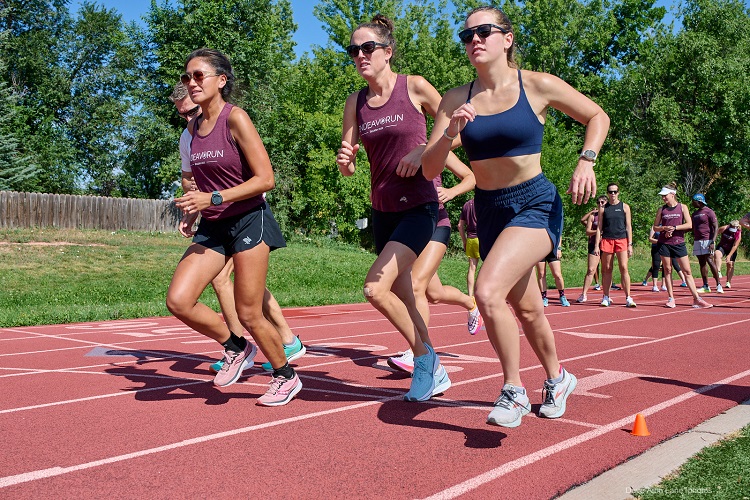
What should you do? Running on tired legs is part of endurance training, but there are signals that let you know when it’s a good thing and when you’ve done too much.
There’s a lot of information out there and it can be hard to decide what’s best for your body on any given day. As a running coach, a lot of what I do is help athletes know when it’s ok to keep pushing and when we should take extra rest.
Hopefully this article will help you know how to better read those signals and decide when to rest, when to modify and when to keep going with your training.
There are benefits to continuing to move even when sore, which may mean modifications to your planned training session. And it absolutely means exploring the reasons behind your soreness.
All right, break down the factors involved, weigh the pros and cons, and provide practical insights for runners grappling with the common question: should you keep running when your legs are sore? Let’s dive into the practicalities and realities of this decision, exploring how it impacts your body and your overall running experience.
Common Causes of Muscle Soreness for Runners
First, let’s take a look at what causes muscle soreness. There are a few factors that contribute to how you feel immediately after and the days after a workout in the gym, speed workout or long run.
Fatigue in your legs is not uncommon during marathon training. It makes sense that each week you’re asking the body to do more and more than you’ve ever done before, so it’s going to respond by asking for time off.
Here’s the main culprits in your tired legs:
#1 Delayed Onset Muscle Soreness (DOMS)
According to the American College of Sports Medicine, soreness can develop due to microscopic tears to muscle fibers from stress due to an activity, which are required for muscle growth. Symptoms may include tenderness and stiffness, among others.
Delayed onset muscle soreness, also known as DOMS, is muscle soreness or discomfort that occurs after your workout, usually showing up within 1-2 days and if it was a really intense session taking 2-4 days to peak.
After that it will start to subside.
Whether it’s strength training, running, skiing, or another activity, they all cause stress to muscles. Your muscles need to repair themselves and DOMS is believed to be part of the muscle repair process.
Usually this is because you did more than your body was used to, which increased the total muscle breakdown and thus the recovery needed.
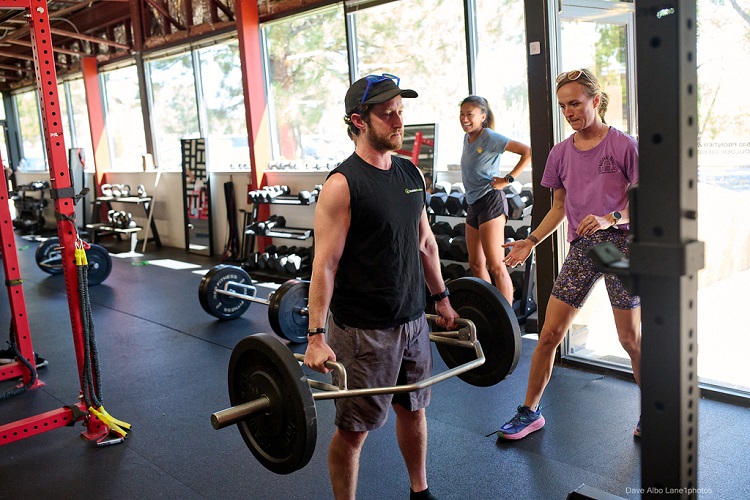
#2 Increased Intensity
Another cause of muscle soreness is increased intensity. According to a study on the effects of intensity and duration of exercise, both factors results in an increase in muscle soreness. But intensity of exercise is the more dominant component to create those microtears in the muscle tissue and thus soreness.
So if you lifted heavier weights in your most recent trip to the gym or your latest run was a tough hill workout or you tried some new exercises you’ve never done before, you might be feeling a bit more sore than usual.
#3 Improper Form
Regardless of the type of physical activity you’re doing, it’s important to do any exercise with proper form, even something as seemingly simple as walking. When we don’t use proper form, we can put ourselves at risk for injury.
It puts more stress on our joints, tendons, and ligaments, or we’re not recruiting the right muscles and thus overworking others.
Recording ourselves running or doing exercises in front of a mirror can be helpful. When we’re fatigued, it can also be helpful to run through a mental checklist about where we’re holding tension or what muscles are feeling a bit more strained to try to adjust in the moment.
#4 Changing Terrain
If you’re used to doing a lot of road runs and then head out for the trails, don’t be surprised to find that all kinds of things are sore. The same can happen from running on the snow or the beach, where your body is required to use more of those little stabilizing muscles.
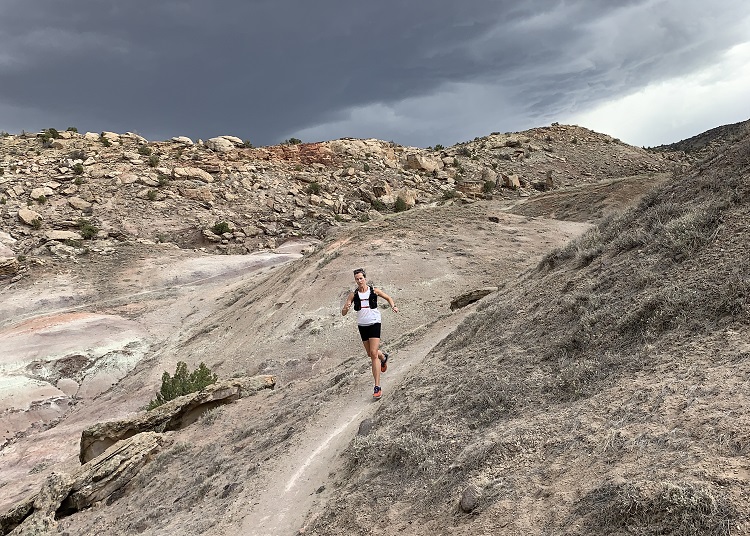
Should You Run With Sore Legs?
Running on tired legs is a common part of training, it’s called the cumulative effect of increasing mileage and intensity during a training plan. However, there’s a distinct difference between running on tired legs and running when you’re legs are extremely sore.
According to Physical Therapists Asher Henry, “injury pain is often acute, localized and can be sharp or an intense ache. Its onset is commonly quick – immediate or within 24 hours – after the exercise that caused the irritation.
When an athlete experiences this type of pain, they should not run and seek the advice of a professional to help determine what is going on. Running through this type of “soreness” can lead to a significant injury or setback.”
Quick checklist for working out with sore muscles
✅If you notice that your legs feel a bit less stiff and aching, as you get up and start moving around then you are probably in a place to try an easy run if that’s what is on the schedule. Make a deal with yourself that you can always cut it short if things don’t start to feel better.
✅If you did a heavy lift yesterday and your legs are sore today, you can usually still try a nice easy run. It may actually help to work out some lactic acid and feel better.
❌Anything that is causing you to change your gait is an immediate stop.
❌Anything that is a sharp shooting muscle pain or swelling is an immediate stop.
❌You generally just feel completely exhausted or wiped out.
Running through pain is not the sign of a real runner, it’s the sign of an athlete on their way to an injury which absolutely means not hitting your goals. Know that a day off or a modified workout is far more beneficial in the long run for your goals.
In other words, it’s not going to be abnormal for you to have days where your legs feel heavy, you feel tired or it’s just not as easy as it has been. That’s ok. That is part of the process of your body breaking down so that it can build back stronger.
It is only able to build back stronger when you TAKE REST DAYS and down weeks.
Can Running Help with Sore Legs?
Yes, sometimes. There’s a reason that we often assign recovery runs after a hard speed session or long run.
There is something about getting the body moving at a TRULY EASY pace that seems to help loosen things and get the blood flowing to the muscles. Note that recovery runs should be even slower than your easy days and are usually pretty short.
This is a case where you may have to test it out to see what works best for your body. And of course, go through the checklist above.
Why Are Your Legs Sore After Running?
This is the crux of the matter. It’s really important to figure out why you are sore and then determine any changes that you need to make.
A little soreness is ok, but constant soreness is an issue that needs to be addressed as it could be the precursor to injury.
Are you newer to running? It’s absolutely going to take your body time to adapt to the intensity of this sport, which is why we love programs like Couch to 5K for a gradual increase.
Have you increased your speed workouts or total mileage more than 10%? Make sure you aren’t breaking the cardinal rule of not doing too much, too fast, too soon.
Have you started lifting more weights? Good! It’s just going to take a bit for your body to adapt to a new stimulus.
Are you underfueling or dehydrated? We talk more about this below.
Does running surface make a difference? For me my legs are far more tired after running on concrete sidewalks than asphalt, which makes sense as it has less give to it.
How old are your running shoes? Worn out shoes are a great way to get injured, find out when to replace running shoes.
Should You Workout When Sore?
It’s the same breakdown to decide the cause of the soreness and what you intuitively know is the best option, not just what you training plan says you’re supposed to do.
As I mentioned earlier, I’m often a proponent of continuing to move when sore. This doesn’t mean that I do a heavy-duty strength session that leaves me barely able to walk down the stairs and then go do a hard-core hill workout the next day. While I’m certainly “moving,” that’s probably not in my best interest, or yours.
But let’s say you are sore from the new workout routine you’re trying or that quality run you tackled, what can you do? Keep reading for some ideas.
Option 1: Take an Active Recovery Day
Active recovery days are different from a rest day. They include activity that’s lower in intensity and may help in the healing and recovery process.
What can you do on active recovery days? Walking, yoga, pilates, or swimming are just a few examples of the types of activities that allow your body to recover while also promoting blood flow and the delivery of nutrients to your muscles.
You can also do a recovery run. These runs are SUPER easy and a key tool used by elite runners. They’ll work for you too as long as you let go of any thoughts about pace.
I highly recommend checking out my post that goes more in-depth about active recovery days.
Option 2: Focus on a Different Muscle Group
If you had a challenging run yesterday, but are still up for working out, focus on a different muscle group.
While running does engage the entire body, your lower body is probably the most fatigued after a run. Consider a core-focused or upper body workout instead.
A strong upper body and a strong core are crucial to good running form and everyday life too. This way you’re still moving which feels good to the brain, but you’re giving the legs time to recover so you can have a good run the next day.
Checkout my upper body workout for runners to get started.
Option 3: Take a Complete Rest Day
It can be hard to just take a rest day, or a passive recovery day as they are also known. It can make us feel like we’re losing fitness or that we’re lazy.
I promise you though that rest days are crucial. Without them we can end up overtraining, developing an injury, or dealing with a whole host of other side effects contrary to our goals. Rest days help our bodies recover and stay healthy.
Make sure they are part of your training plans!
Ultimately, the most important thing is to listen to your body. You know it best, but sometimes our own judgment can be clouded by our desire to reach our goals.
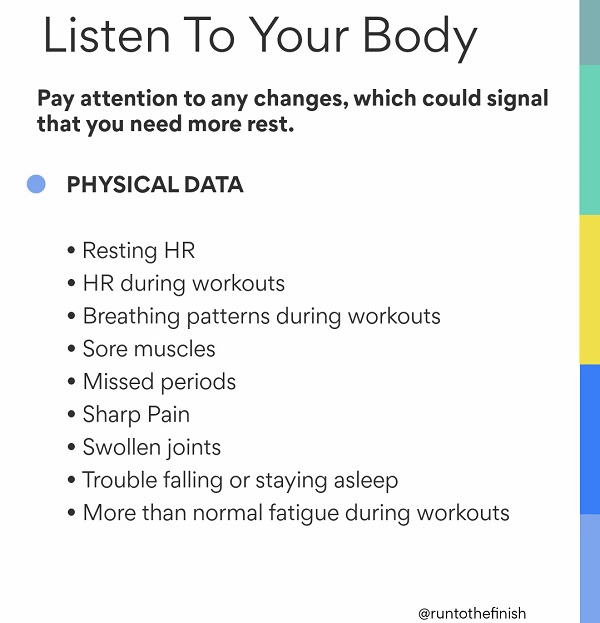
How to Relieve Sore Legs from Running
There are a lot of ways that you can relieve muscle soreness. Previously I’ve highlighted 11 great ways to help with muscle soreness from running. All of them are applicable to helping recover from soreness related to other activities too.
It’s important to find what works for you and even what you enjoy. If you enjoy it, you’re more likely to stick with it and make it part of your daily routine.
Whether it’s foam rolling, a monthly massage, daily stretching, an Epsom salt bath, ice bath or something else, make it a habit!
But let’s back up just a tad and talk about what we can do before we hit that stiffing aching muscles point.
Prevent Muscle Soreness from Running
You might be wondering if we can avoid muscle soreness altogether. That would be nice, right? You’d never have to ask yourself if you should work out while sore or run on sore legs again!
Even if we may be able to reduce muscle soreness or relieve it, there will probably always be times where we’re just going to have to deal with it.
Always Warmup
If you’ve been around awhile, you know I swear by a good warm up, especially one with dynamic stretching. If you’re new here, well, now you know! This is a huge key to ensuring that you don’t start a workout with muscles that are tight and therefore more prone to injury and less range of motion.
Here’s a quick Dynamic Running Warm Up you can try!
Avoid Dehydration
Being dehydrated will not only make your muscles feel weaker, but they will again be more prone to injury. Additionally, it can cause muscle cramps or just make you feel completely without energy…so ya that’s not helpful for sore legs!
Start your day with a big glass of water. Sip from a bottle all day.
Add in electrolyte powders for harder or hot workouts and you’ll be on your way to crossing this off the list.
Fuel Your Body Well
Just like being dehydrated can leave us feeling less than our best, so can poor nutrition. If you aren’t taking in enough calories to support the work that you’re doing then your body is in a constant state of breakdown.
In fact, this is an easy way to lose muscle mass while marathon training! You can’t underfuel and expect to perform at your best. So stop thinking just about calories and think about what you can give your body to feel it’s best.
1. Try adding in more protein to help with muscle recovery.
2. Try some foods known to combat inflammation like cherry juice, ginger, turmeric, and fruits like watermelon and pineapple.
3. Enjoy allllll the veggies.
4. Stop fearing carbs. Fat burns in a carbohydrate flame – meaning you won’t be burning as many calories to shed weight if you’re body is instead using your muscle for fuel.
Post Workout Cooldown
Just like we should always warm up before a workout, we should also include a post-workout cool down. I am a personal fan of including a walk after my runs to help my heart rate come down, promote blood flow, and send a signal my body that it’s time to rest.
What About Stretching for Sore Legs After Running?
A review of 12 studies looking at whether stretching prevents or reduces muscle soreness found no meaningful reduction in DOMS.
Does that mean we shouldn’t stretch? It means that if you don’t enjoy it, you can probably skip it.
I am very rarely focused on stretching right after a run. However, I do my post run stretches in the evening because then I have been sitting all day and can feel that my hips are tight. I know that stretching helps me to slow down, breath and it just feels really good.
That allows me to wake up the next morning ready to tackle my workout.
Pay attention and remember that just like you didn’t gain your fitness in one day, you won’t lose it in one day either. Listen, evaluate, and make the best decision for you. A run with sore legs isn’t the best run, but sometimes it’s exactly the right run.
Looking for more training tips?
Other ways to connect with Amanda
Instagram Daily Fun: RunToTheFinish
Facebook Community Chatter: RunToTheFinish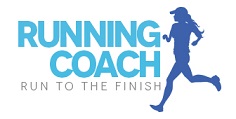
Sign Up to Receive a Weekly Newsletter with Top Running Tips and Laughs


